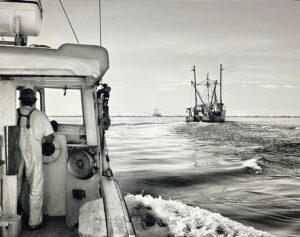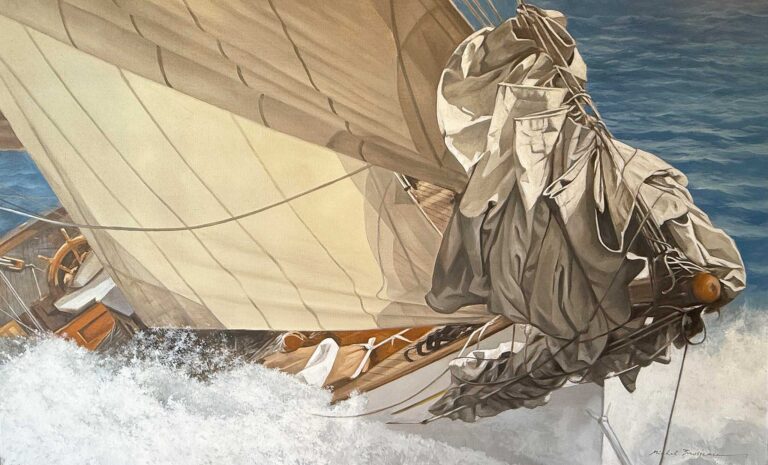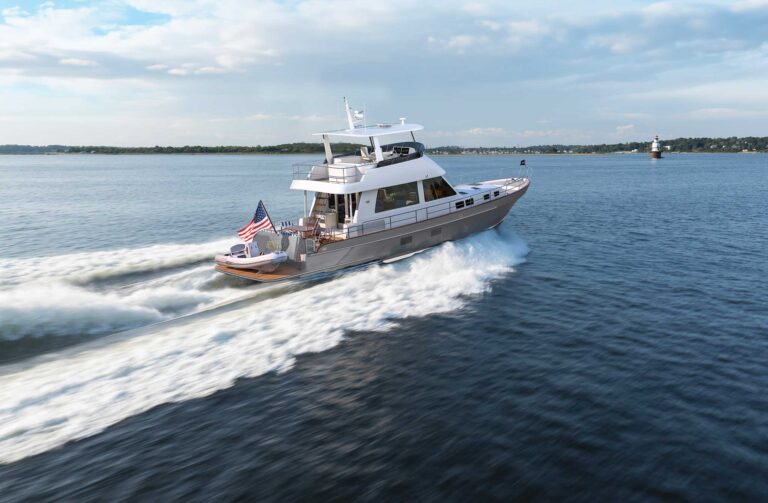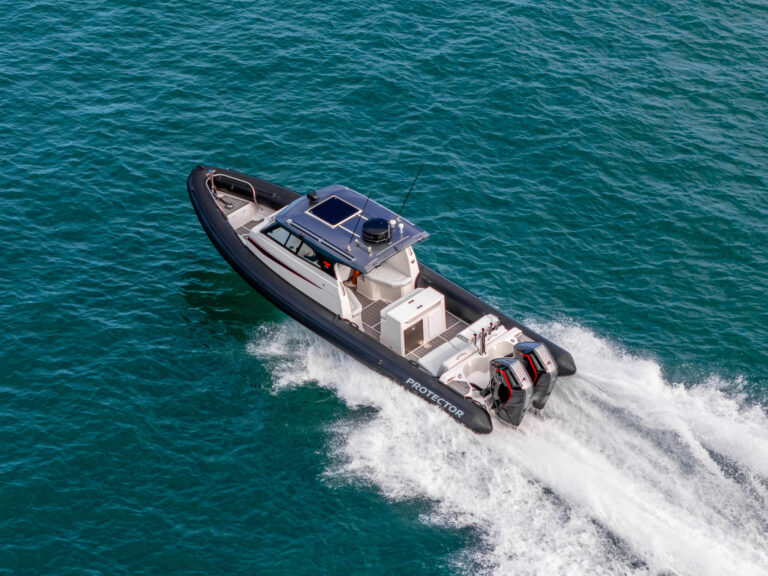
The Bertram 31 Tracy Ann is rigged out for a day of fishing off Cabo San Lucas in this image from the Soundings files. Authors David Patten and Jeffrey Rodengen called this compact convertible “the workhorse of the sportfishing industry” in their book, The Legend of Bertram. By the late 1960s, this revolutionary boat could be found offshore or running inlets near fishing grounds around the world. The boat’s low profile, spacious cockpit and “all-business” look became as familiar in the Mediterranean as it was in Florida and along the Baja coast.
Why was this boat the cutting-edge fishing craft of its day? In many ways, it was the right boat at the right time, a modern option during the Space Age 1960s, when approximately 37 million boating Americans turned their attention to new boats made of fiberglass.
Race boat driver Sam Griffith, who drove a 31 prototype to victory in the 1960 Miami-Nassau race, called it “a breakthrough,” thanks to the revolutionary deep-V hull designed by Ray Hunt. The twin-engine, 31-footer didn’t broach easily, didn’t roll the props out at speed in a beam sea and was superior at running inlets.
Dick Bertram, a broker who was with Griffith during that race, exhibited the newly christened Bertram 31 at the 1961 New York Boat Show, where it drew a curious crowd. “You’d go to boat shows and see this Bertram thing somewhere off in a corner, with people standing around pointing at the bottom,” wrote Patten and Rodengen in The Legend of Bertram.
Production began that same year, with the builder relying on a highly skilled workforce made up of Cubans who had fled Fidel Castro’s newly established communist regime.
“If it hadn’t been for the Cubans, there probably wouldn’t be a Bertram,” Dick Bertram said later.
The 31 came in four models: the Sport Fisherman, with a lower station and open wheelhouse; the Flybridge Cruiser, with a rear bulkhead; the Hardtop Cruiser; and the open Express Cruiser. The 31’s legacy lies in the 1,860 boats built during its 16-year production run.
This article was originally published in the December 2020 issue.










